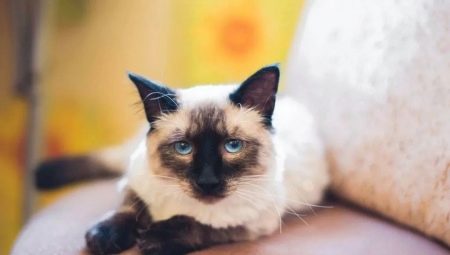The first mention of Thai cats was more than six centuries ago. Divinely beautiful animals lived in the palaces of Siam - blue-eyed, graceful, brightly colored. There was a belief that Thai cats were not afraid of rat bites, since there were very few nerve endings on their skin, it was strong and elastic. In addition, the capillaries of this breed are located far from the surface of the skin, so the likelihood of infection with a bite or injury is small.

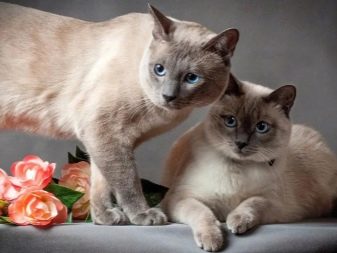
The ruler of Siam strictly ensured that the sacred cats did not leave the country. However, one day, however, the British consul received the gift of two heterogeneous Thai kittens as a sign of special favor and gratitude. So the breed came to Europe and very quickly became extremely popular. As for Russia, Thai cats were recognized at the end of the last century.
Thai cats are not identical to Siamese, despite their resemblance. The main difference in physique is that Thais are denser, more compact, well-knit than Siamese.
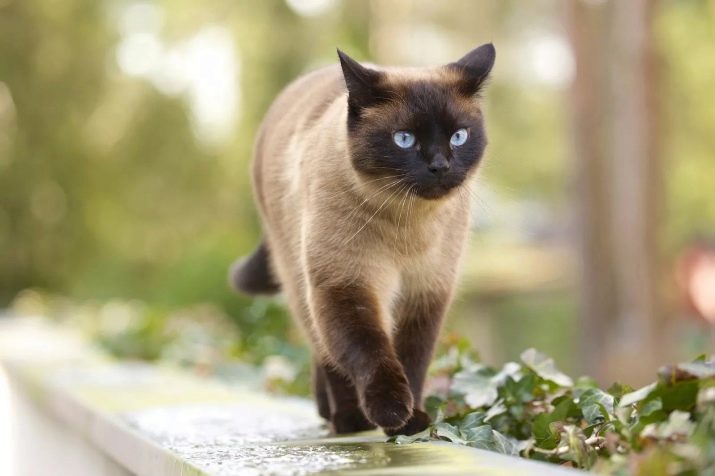
Features
The characteristic color features of the breed are:
- contrast of colors on one animal;
- a large number of possible colors;
- unusual shades;
- the presence of a dark "mask" on the face.
"Thais" can be plain and spotted, striped and tortoiseshell. Throughout life, the color may change - either become brighter, or, conversely, turn pale.
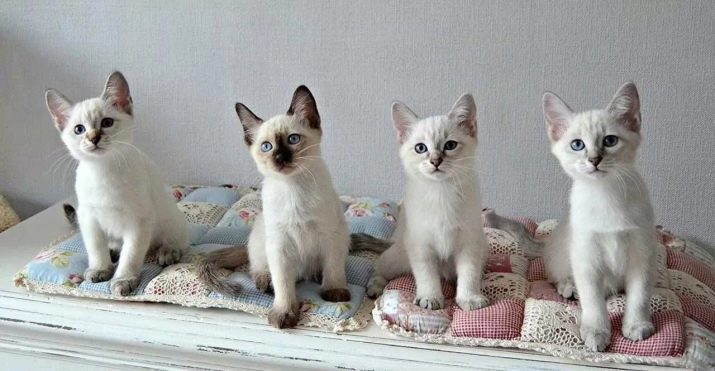
The color of the cat will depend on genetics. When looking at a newborn kitten it is difficult to say which tail it will possess, since the color will manifest with its growth. The breed is known for flowering - this means that kittens are born white, and later spots appear on them. Adult cats can get completely dark.
The body of a Thai cat is always lighter than the legs, face and tail. And the color depends on the conditions in which the cat is kept and what it eats. If the Thai diet has a lot of offal and seafood, then it darkens over time with a couple of tones. The same effect will be achieved if the cat lives on the street and in cool.
The most expensive and valuable color of a Thai cat is the one in which the contrast between body tones and points is the strongest. Marks should be monophonic, even. Exhibition copies should only be such.
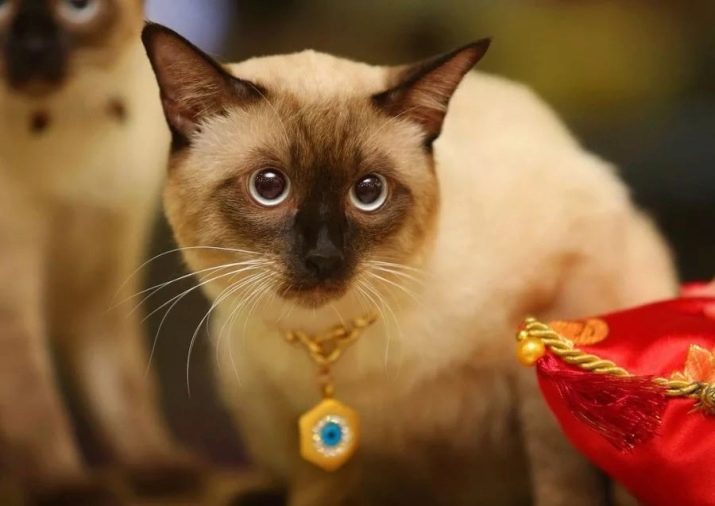
All representatives of the breed have a sky-blue eye color, this symptom manifests itself from the moment of birth. Other shades of their eyes are unacceptable, as well as blotches of other shades on blue eyes.
By nature, Thai cats are very mobile, curious, playful, funny. They are good at thinking and easy to learn, they love to play with the owner, they often drag the whole family into their entertainment. They have excellent intuition and easily find the "key" to the heart of each family member. They are universal favorites.
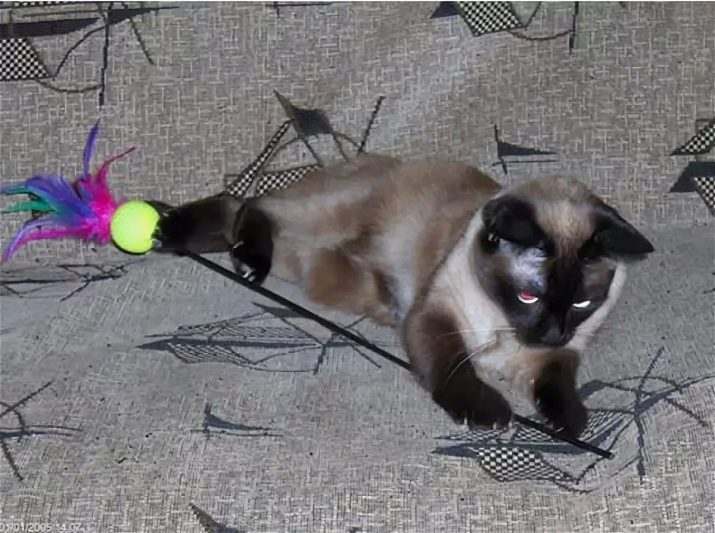
Kittens are very curious. They need to literally climb into every corner, but at the same time not lose sight of the owner. They love to play with packages. Growing up, they begin to nibble wires, so you need to make sure that it is not available to them. This is due to the fact that the teeth itch, and it is very convenient to do it with wires.
Starting a pet house - a Thai kitten, you need to check the house for safety. Windows should not be open, chemicals, tablets, needles and threads in the public domain should not be the same as polyethylene, glass. The washing machine must be tightly closed. Screaming at the kitten, if he did something forbidden, is not necessary, it only scares him. You need to calmly show him that you are unhappy, and turn his attention to a toy or scratching post.
Spray gun helps well.
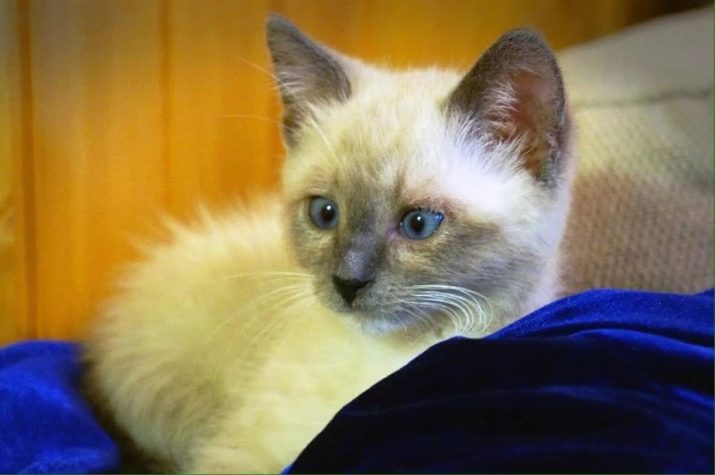
Primary colors
The color of Thai cats is characterized by a large number of varieties.
Classic shades are considered several options.
- Color point - a typical Siamese color, which everyone knows. The hair on the body of the cat is white, and the muzzle, paws and tail are either dark brown or black.
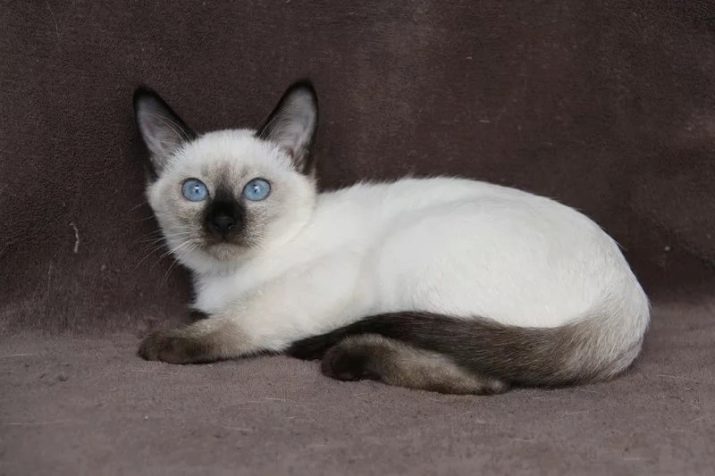
- For force point a light cream torso is characteristic, and the points are brown. This is also a common color.
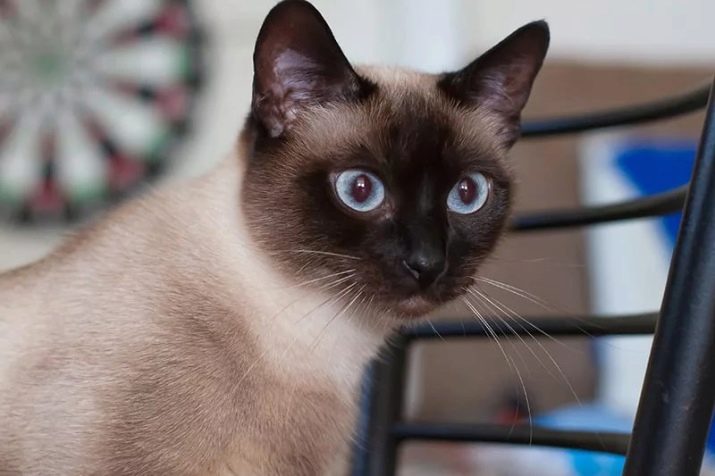
- Chocolate point - This is a combination of shades of baked milk on the body, ears, head, paws and tail are darker for a couple of tones. The back may be stained or stained in chocolate color. The color of chocolate point is interesting in that the darkening of these cats does not affect, they retain the contrast that was originally, for life.
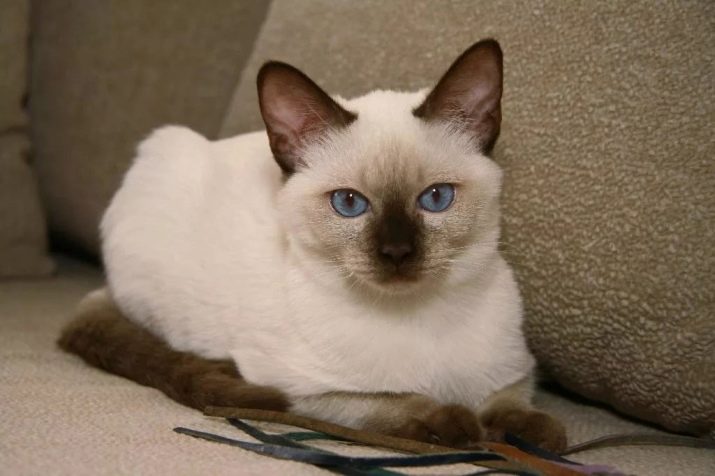
- For color blue point cold white coat with a shimmer in blue on the body is characteristic. The ears, base of the muzzle, paws and tail are either light or dark gray. The blue point color is characterized by a smoky blue color scheme.
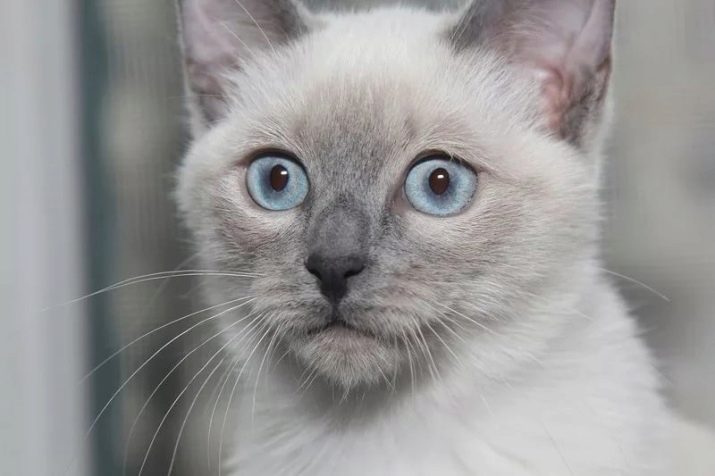
- Cream point - These are animals of milk or beige color with cream or pink spots. The area of the muzzle, ears, paws and tail are painted more intensely.
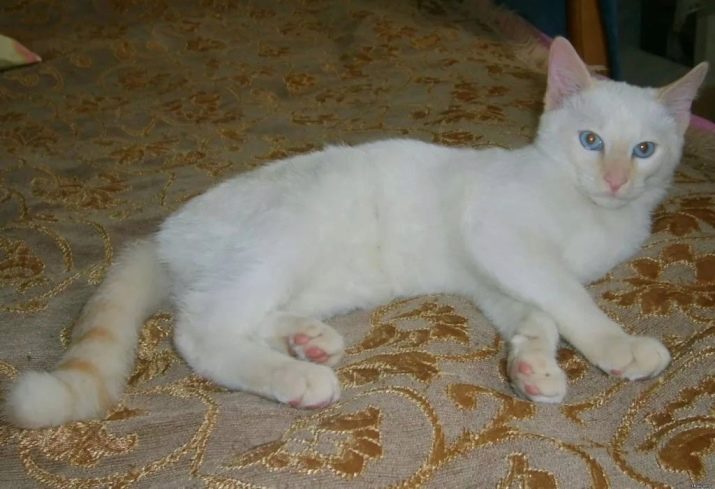
- Red point - it is pink in color, and the spot-points are reddish. A point in a red tone is much less common, which is why it is difficult to write a description of the character and habits of a cat with such a color.
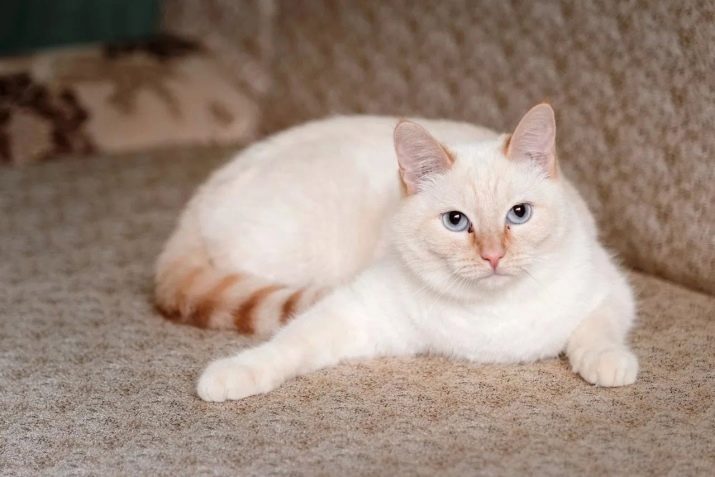
- Tortie point - as the name implies, this type of color is tortie. The basic colors are cream and pink. Cakes are one of the rarest three-color types of color, primarily because there are no repetitions of colors, each of them is individual and unique. In addition, throughout the life of the animal, the color changes.
In the cake, only representatives of the female half of the breed are painted.
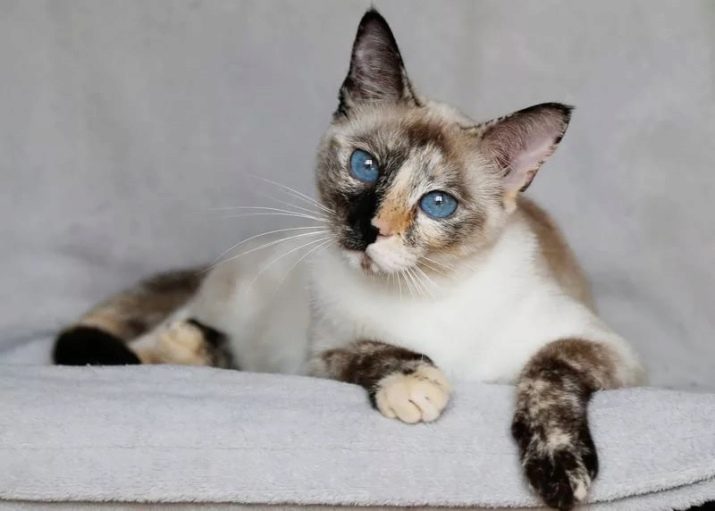
- Lilac Point - one of the rare colors, it is characterized by soft and smooth transitions of halftones. The colors are very delicate, pastel beige, and cats with this color are very beautiful.
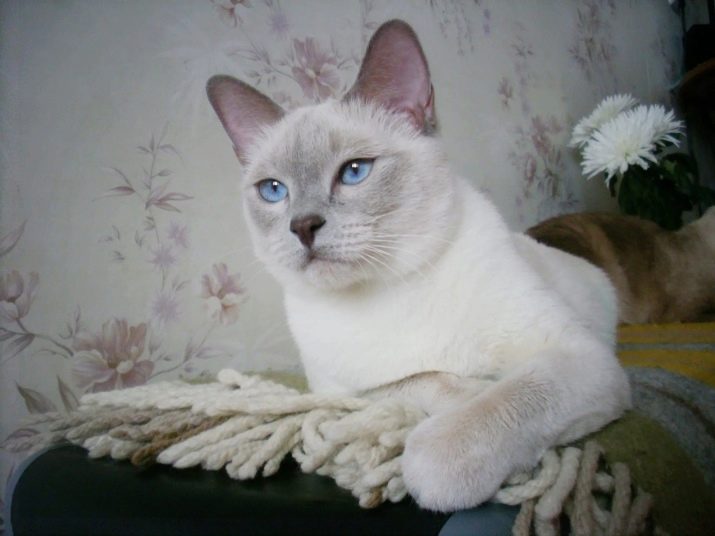
- For color frost point warm tones of magnolia are characteristic. Marks are gray-pink.Frost point cats are lighter than all other colors.
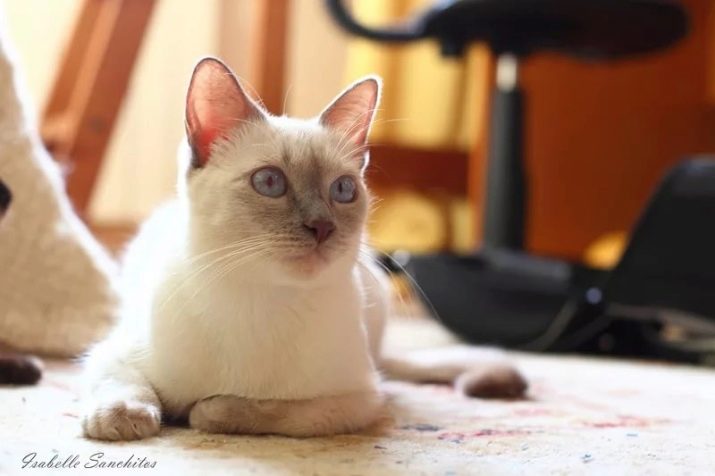
- Tabby Point - color stripes. Americans call this color Lynx Point. The stripes are well defined. A mark in the form of the letter M is clearly visible on the forehead, dots at the base of the mustache, and black or dark brown circles around the eyes and nose. Shades are different - from light cream to dark brown.
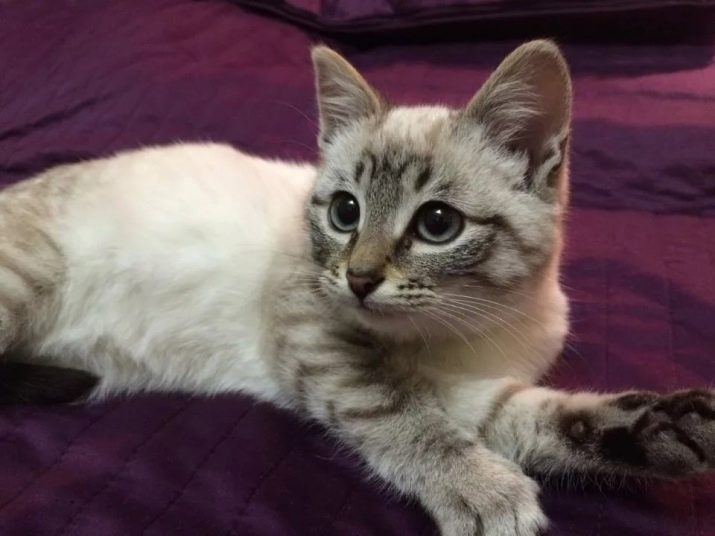
The darker the points, the darker the skin on the legs and nose will be. The most common colors are forces and color point.
Description of the colors of the tabby point
The color of the tabby point has several varieties. All of them are striped, they simply differ in the color of the stripes:
- Strength Tabby Point has black stripes;

- blue tabby point has gray-blue;
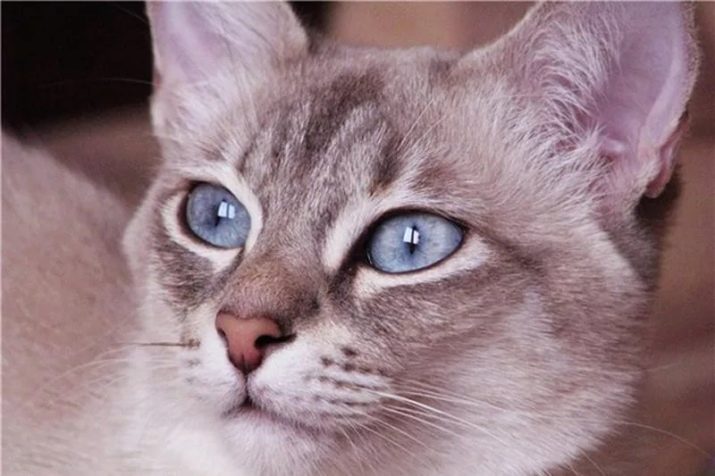
- chocolate tabby point is characterized by milk chocolate strips;
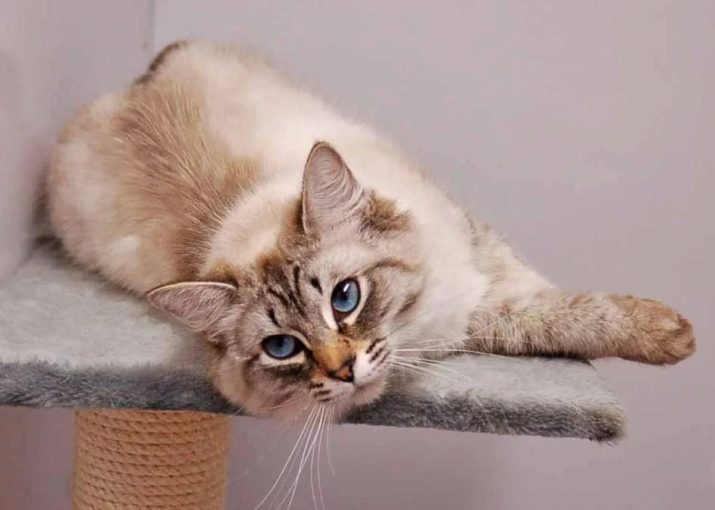
- at orange tabby point, respectively, orange.
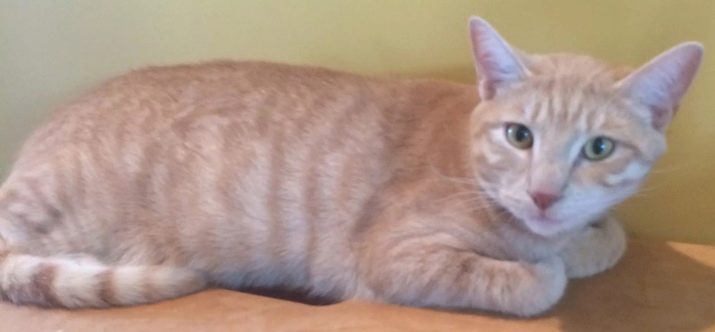
The color of the forelegs is “torn rings”, and the hips are decorated with them. Hind legs are dark monophonic. Ears with a "thumbprint" - a bright spot on the outside. The tail is also painted with torn rings. The nose is pink with a stroke of the color of the main color. Paw pads - color markings.
The stronger and brighter the contrast of the points and the main color, the greater the success cats expect at the show.

Rare options
Lovers of the breed are very actively continuing to develop it. As a result of crossbreeding, more and more exotic colors appear. Cats of the breed carry a recessive gene, therefore, another breed in relation to it is always the carrier of the dominant gene. "Thai" genetics appears only when both the cat and the cat belong to this breed.
Withdrawal of the Neva Masquerade Point was obtained after crossing Thai animals with a Siberian cat. Since the mixing of the breeds took place, the coat also changed at a qualitative level - the appearance of undercoat was recorded, as well as the elongation of the coat to medium.
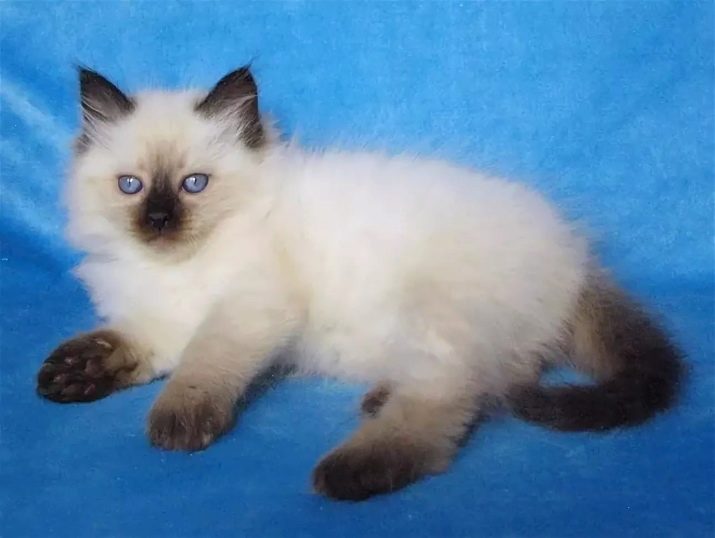
Consider a few of the rarest colors, in addition to those listed in the section above.
- Cinnamon point - with cinnamon marks. In this color, the contrast of warm and cold tones looks very impressive.
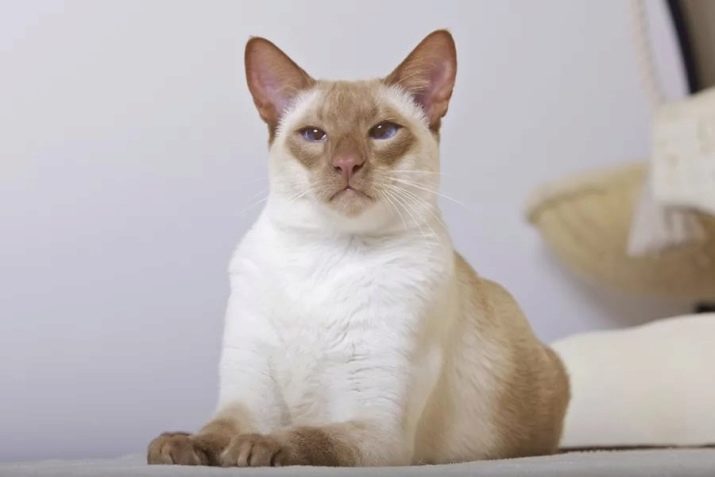
- Caramel Point - a gentle, warm shade of caramel, brownish-gray. Strips are not considered a defect, but are undesirable.
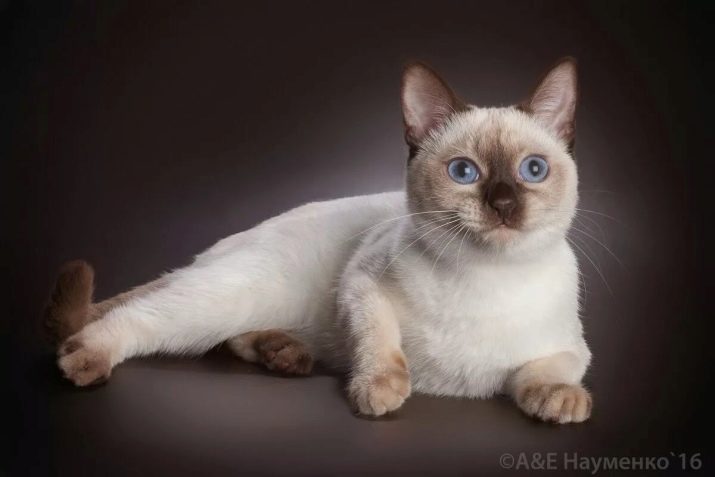
- Fawn Point - these Thais have pastel pink marks, and the body is pale lilac. This coloring resembles a Japanese watercolor.
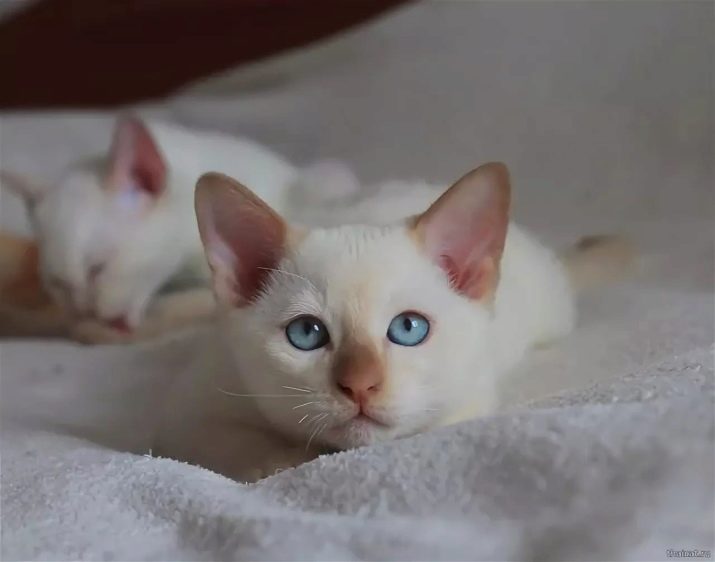
- Taupe point - very contrasting. On a snow-white basis, there are clear marks with a basic brown-gray color and a pinkish or purple tint.
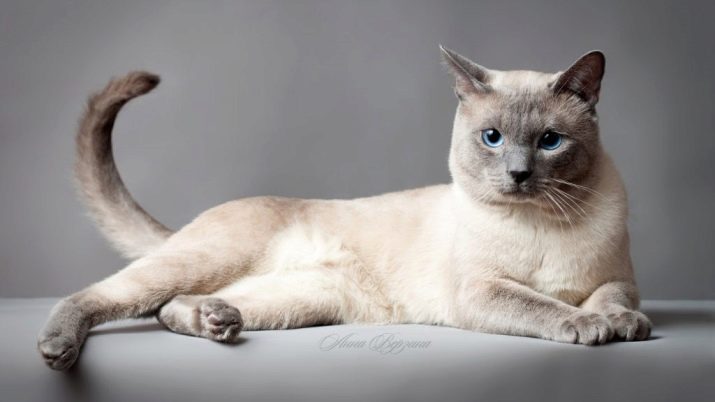
Defects of the breed are considered to be dark hair in the abdomen, the absence of any point, not blue eyes, white marks, as well as various kinds of spots on the body. In addition, even if the eyes are blue with a splash of a different color, this is still considered a defect. The most valuable are animals with reddish and red shades of point and tortie cats, regardless of their color scheme.
Unrecognized colors
Today, felinologists are working in the field of other tabby colors, most likely, new colors of Thai cats are waiting for us there.
English and Dutch breeders are working to bring out the colors of Apricot Point and Silver Point. But to date, these colors have not received recognition, since their appearance occurs spontaneously, for an unknown reason.
It is believed that it is not necessary to recognize these colors, since they have a strong similarity with the already recognized colors, and only a specialist breeder can distinguish the difference between them.
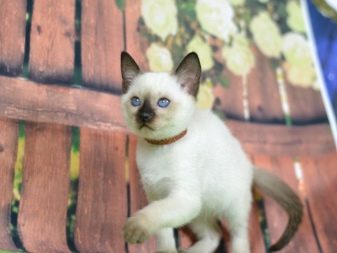

About caring for Thai cats, see the next video.
